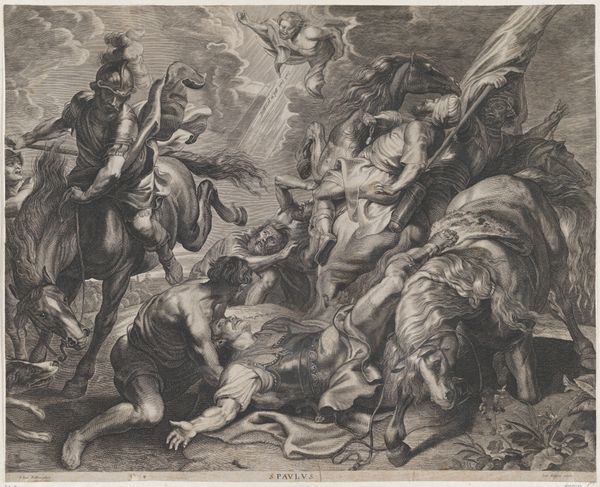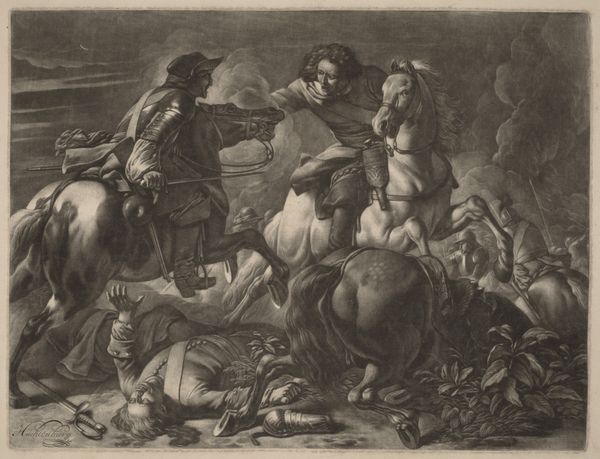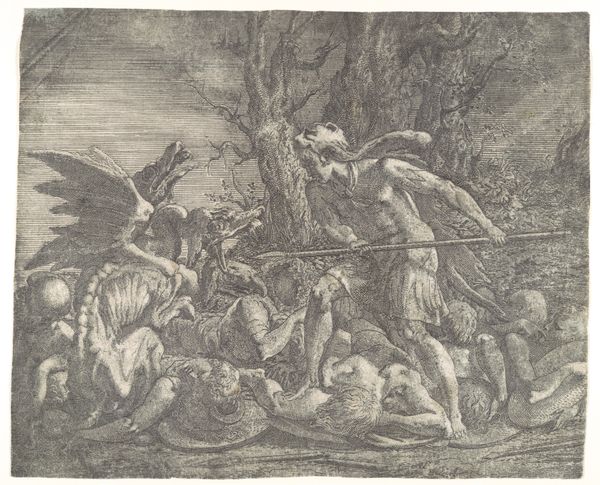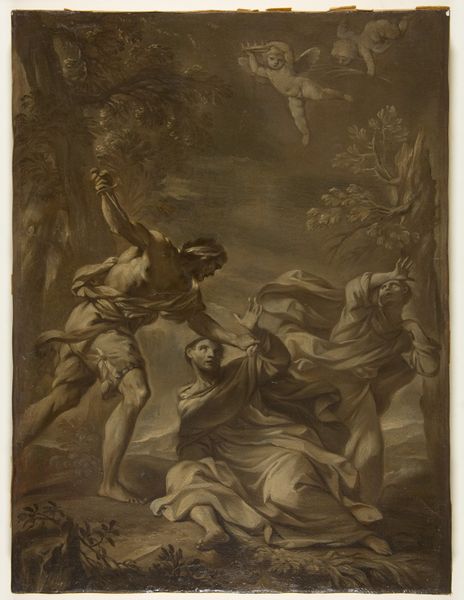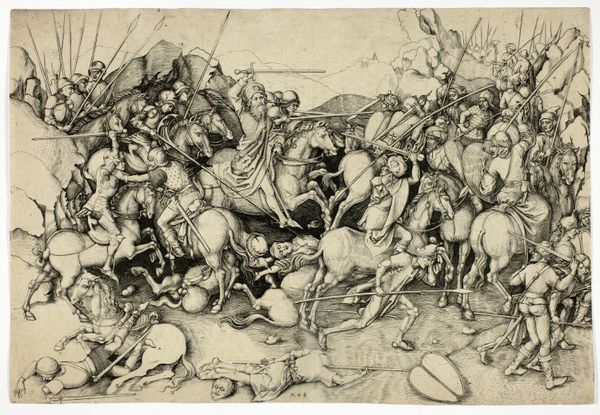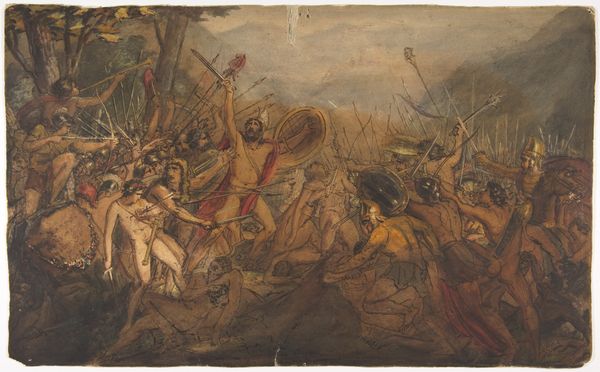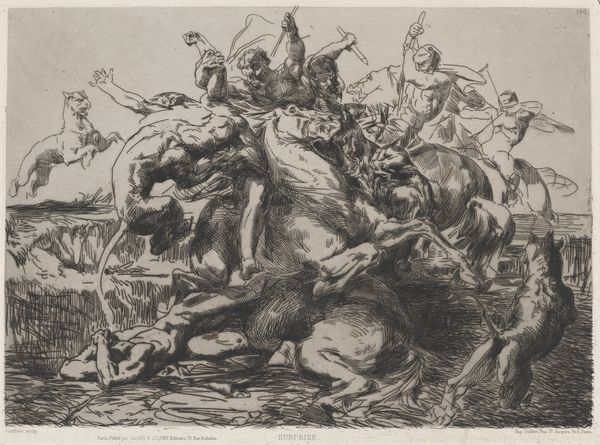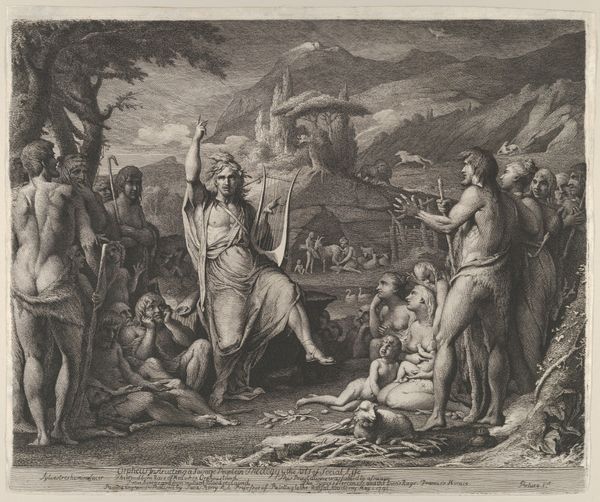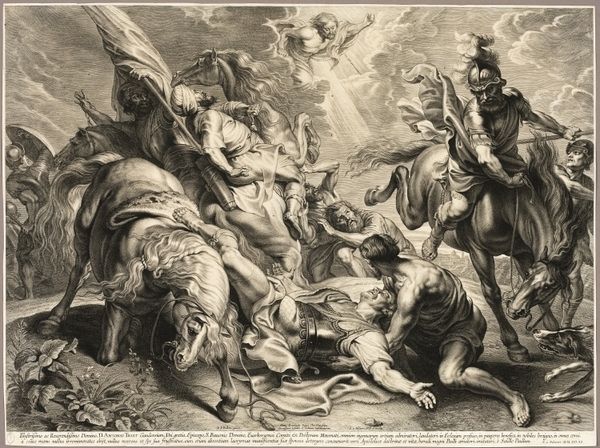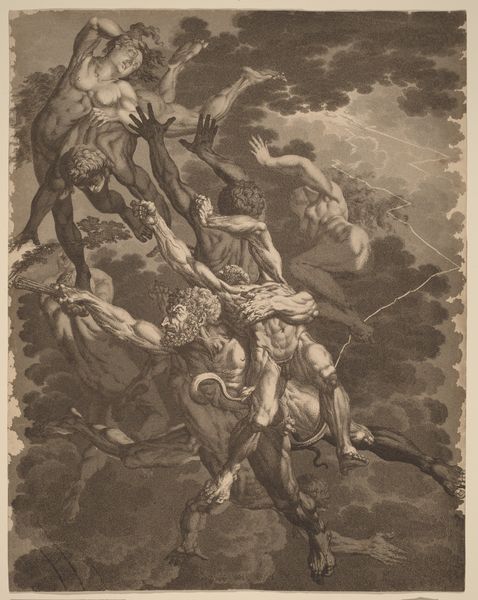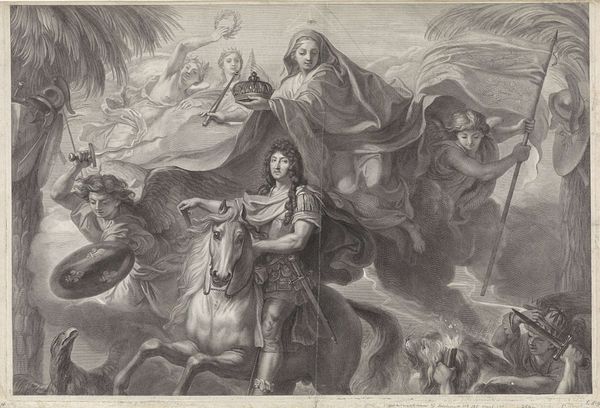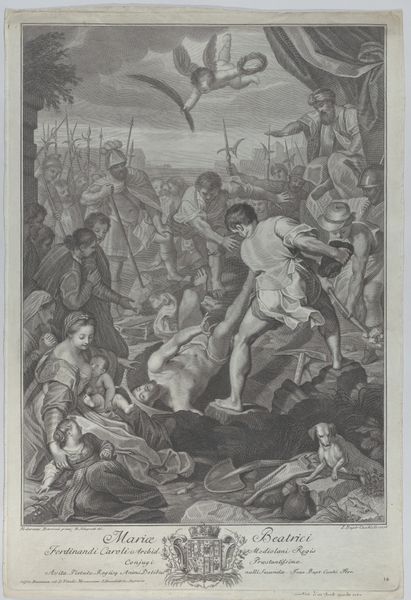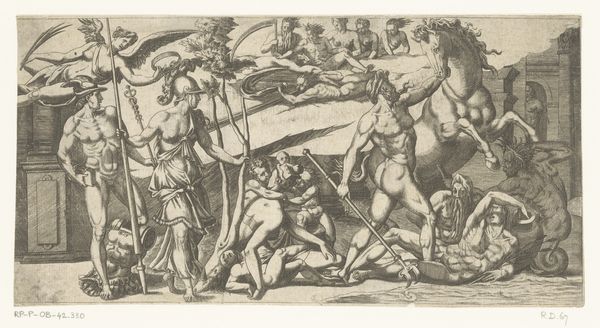
Scene from the Gallic Wars: The Gaul Littavicus, Betraying the Roman Cause, Flees to Gergovie to Support Vercingétorix 1838 - 1840
0:00
0:00
oil-paint
#
oil-paint
#
landscape
#
oil painting
#
romanticism
#
horse
#
men
#
history-painting
Dimensions: 13 1/2 x 17 3/4 in. (34.3 x 45.1 cm)
Copyright: Public Domain
Curator: Look at this captivating oil painting by Théodore Chassériau, titled "Scene from the Gallic Wars: The Gaul Littavicus, Betraying the Roman Cause, Flees to Gergovie to Support Vercingétorix," created between 1838 and 1840. It resides here at the Metropolitan Museum of Art. Editor: Oh, wow, the sheer drama! There's such a sense of urgency, figures flying every which way... And is that lightning in the background? Makes you wonder what catastrophe has unfolded here. Curator: Precisely! Chassériau captures a pivotal moment during the Gallic Wars, where Littavicus defects from the Roman army, siding with the Gaulish leader Vercingétorix. This painting really speaks to the tumultuous socio-political climate of 19th-century France, as it was trying to make sense of its revolutionary and imperial past. Editor: Absolutely, the chaos speaks volumes. But look at the colors—muddy browns and greys pierced by that startling white horse! It almost feels as if the betrayal is made manifest in the visual discord. It feels Romantic in its spirit, quite grand, and just a tad overwrought perhaps. Curator: Well, that aligns with the tenets of Romanticism—embracing emotion, individualism, and a certain idealization of historical events. Consider how history painting at the time served a public function, creating narratives that often reflected the nation’s identity, or in this case, grappling with it. Chassériau presents the Gauls as these fierce, untamed warriors fighting for their homeland, something that likely resonated with audiences of the time. Editor: I can see that. Yet there’s a personal aspect, too. That lone rider—Littavicus—caught between allegiances… It gives me a certain sympathy for him. Like he's being tossed by a whirlwind of destiny! Even the landscape feels implicated somehow—it isn't a stage, but rather another force pressing down on these figures. Curator: A fitting way to view the painting through the lens of landscape and romanticism combined. It leaves one to ponder not only Littavicus' plight, but of our own choices amidst conflict. Editor: Yeah, artful depictions like this often get us wondering: are we at the mercy of the storm, or do we have some say? Powerful work; and even in art history, we discover vital bits about ourselves.
Comments
No comments
Be the first to comment and join the conversation on the ultimate creative platform.
